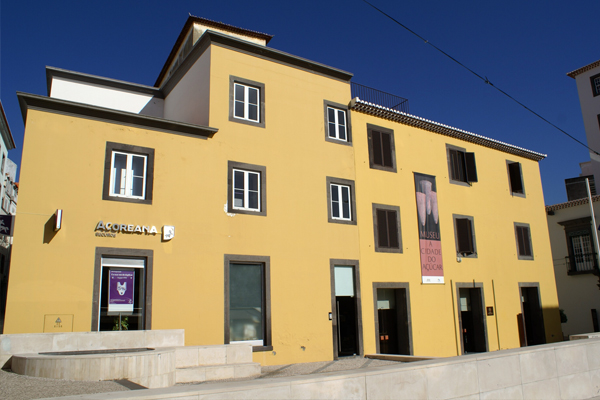 The A Cidade do Açucar Museum (The City of Sugar) is the natural consequence of a small Museological nucleus designated A Cidade do Açucar , inaugurated in 1996 as a memory of a King D. Manuel I Style home, destroyed in the nineteenth century owned by the merchant João Esmeraldo, who hosted the discoverer of America, Christopher Columbus.
The A Cidade do Açucar Museum (The City of Sugar) is the natural consequence of a small Museological nucleus designated A Cidade do Açucar , inaugurated in 1996 as a memory of a King D. Manuel I Style home, destroyed in the nineteenth century owned by the merchant João Esmeraldo, who hosted the discoverer of America, Christopher Columbus.
When the Museum opened to the public, it intended the recognition of Funchal historic buildings, museums or units, connected to the founding of the city and the first centuries of its existence, through an exhibition and teaching guides to visit Funchal during the realm of King D. Manuel I. Being only part of a whole, which was articulated in the other existing units, the all set would be shaped as a city museum.
The City of Sugar Museum is a museum preferably of acknowledged of archaeological finds in the city of Funchal and particularly the excavation in 1989 of the former home of João Esmeraldo, at the place where today stands the Museum, and that after was destroyed,in the nineteenth century, only led to the recovery of the old well.
The stock of the excavation helps to understand the daily life of the city between the late fifteenth century and the mid-seventeenth century.
So, the new museum is not intended to constitute itself as a space for identifying the memory of sugar production and technology, in its two most important cycles in the century XV-XVI and XIX, it must be found in the recovery and musealization of an old mill sugar.
Funchal, village artisans, exceed the banks of a river, installing from the mid-fifteenth century the embryo of a city, founded in 1508. This area of territorial expansion is linked to the production and trading of sugar exported to ports in northern Europe, with priority to Bruges and Antwerp after, but also to the Mediterranean to Constantinople.
In archaeological excavations occurred in 1989, was found a representative of the life estate in Madeira since the fifteenth century until the mid eighteenth century. Were recovered large quantities of pottery fragments century Portuguese XV / XVI and XVII, the so-called "scratching" as well as anforetas, cachinbos, pitchers, bowls, seals, coins, and others, who were exhumed from a well that still exists . The collection also has works of art, framing the epoch.
The Museum also proposes a guide of recognition in Funchal´s sugar cycle, indicating various points of historical interest.
In archaeological excavations occurred in 1989, was found a representative of the life estate in Madeira since the fifteenth century until the mid eighteenth century. Were recovered large quantities of Portuguese pottery fragments ( century XV / XVI and XVII) the so-called "scratching" as well as anforetas, pipes, pitchers, bowls, seals, coins, and others, who were exhumed from a well that still exists . The collection also has works of art, framing the season.

